Polina Zioga and Inês Coelho are visual artists conducting their doctoral research at the Glasgow School of Art. Polina is investigating the use of Brain-Computer Interfaces in real-time audio-visual and mixed-media performances. She will present her research at the Joint Conference on Serious Games 2015 and her new performance will premiere in Glasgow in July 2015. Inês’ research enquires what choreography means in contemporary visual context in relation to sculpture, performance, site-specificity, and spatial concerns. She will present her work at the Glasgow University International Conference in May 2015. Here, they review Catherine Street’s current exhibition on display at the Reid Gallery until Thursday 30 April.
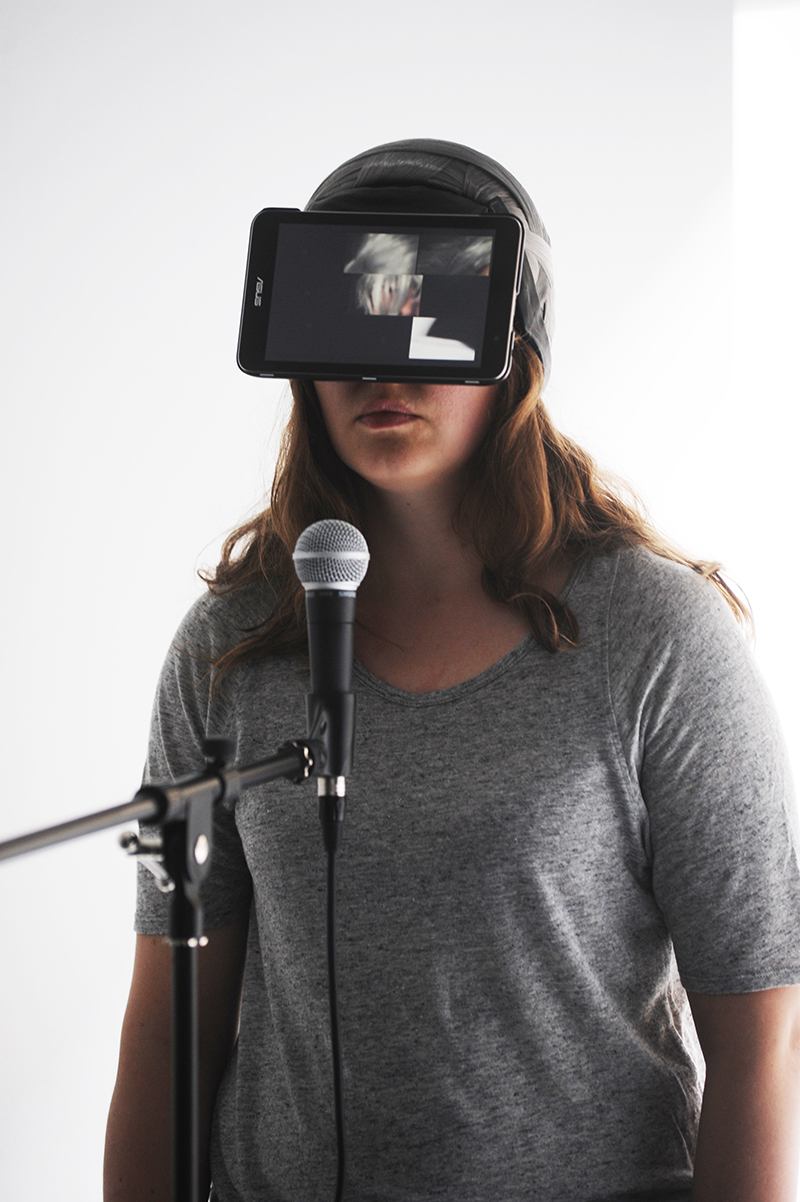
Installation view MUSCLE THEORY: Catherine Street, Reid Gallery, The Glasgow School of Art, 18 – 30 April 2015. Photo Alan Dimmick.
Muscle Theory, a solo exhibition by the Edinburgh-based artist Catherine Street, can be viewed in the Reid Gallery of The Glasgow School of Art until the 30th of April, daily from 10am to 4:30pm. Catherine Street will perform on Wed 29th and Thurs 30th of April from 3:30 to 4:30pm. A screening and talk on her work will also be presented by the Modern Edinburgh Film School in the Centre for Contemporary Arts Glasgow on the 26th of May, at 6:30pm.
When entering the space one cannot be but intrigued by the plethora of different mediums and works – fragments that fill both space and time. Street pays close attention to the exhibition setting. The arrangement of the moving images through the video projections, which often overlap the printed works, the sounds and the narrating voices through the speakers, creates a path which invite us to contemplate her world. It is a world formed with the artist’s own body, thoughts and voice, creating an assemblage of organic images and sounds, which contrasts with the minimal aesthetic of the setting.
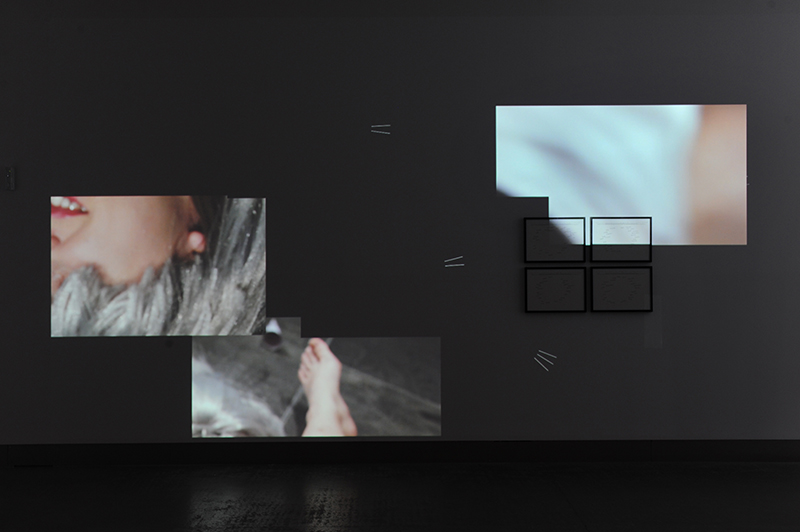
Installation view MUSCLE THEORY: Catherine Street, Reid Gallery, The Glasgow School of Art, 18 – 30 April 2015. Photo Alan Dimmick.
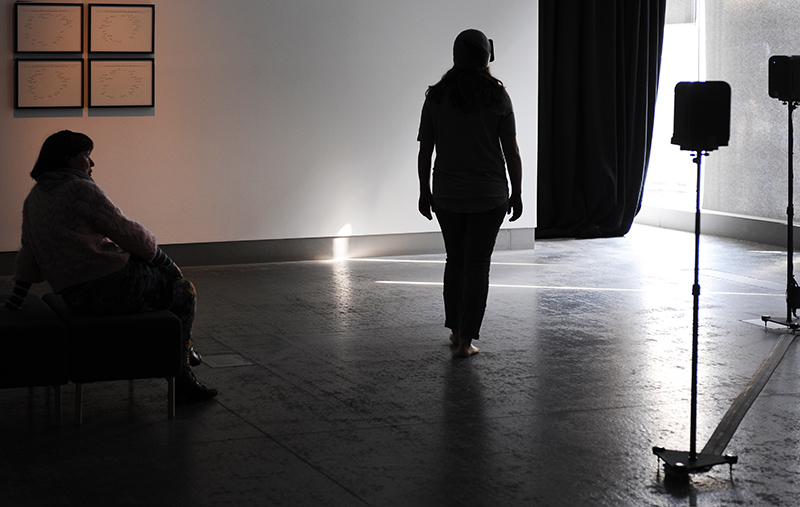
Installation view MUSCLE THEORY: Catherine Street, Reid Gallery, The Glasgow School of Art, 18 – 30 April 2015. Photo Alan Dimmick.
The organicity of the artist’s body, the visceral qualities of its different parts and functions, is revealed as one of Catherine Street’s recurring themes. In previous works, such as Your body of objects (2010), a text performed at Cabin:Codex (Centrespace, VRC, DCA, Dundee, May 2011) and in the installation/performance work Sway & Muscle, developed at Project!!WAKAKA! (Edinburg, April 2014), Street also addresses a transformative fragmented body and its organicity, which she carries throughout her practice.
In Muscle Theory the body, as presented in the moving images, is often disorientated and displaced. At the same time, the frame of the video projections is also divided and broken, functioning as a fragmentation of the narration itself. In parallel, the use of the voices, mainly her own, in the audio works Conceptual Emergency and Inside In, found in the smaller space of the gallery, retains a visceral quality that fills the room. A sofa with two speakers in front of it, invites the viewer to sit facing the window, thus creating and re-enforcing a sense of displacement between staring at the outside world and immersing oneself in the narration of the work.
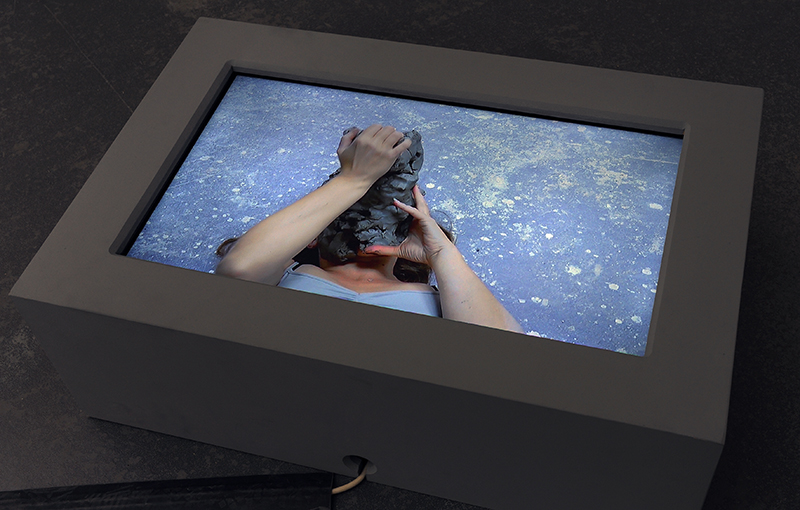
Installation view MUSCLE THEORY: Catherine Street, Reid Gallery, The Glasgow School of Art, 18 – 30 April 2015. Photo Alan Dimmick.
Catherine Street’s performance Breathing then speaking, which takes place in the same space as the audio works, has a futuristic twist. The artist enters the space wearing a tablet in front of her eyes. She walks slowly and stands in front of a microphone. Breathing at first, narrating in the process, her live voice comes into discourse with her prerecorded narration and the mixture of sounds deriving from the outside world. Although one might think, or even expect, that the tablet in front of Street’s eyes creates a feeling of uncanniness or a resemblance to a cyborg, the actual result is once again rendering, this time live, the artist’s body fragmented. The voice is separated from the eyes, and the artist is isolated from the audience. In the tablet’s screen, which is relatively small and not very clear to the viewer, moving images seem to appear and disappear in a way that seems random. We can guess that these are images of a body, but the precise content is left to our imagination.
Breathing then speaking talks back to itself – at a certain instance, Street says ’see images clearly in the screen‘. It is almost as if we are witnessing the artist looking back to herself and seeing her work in a constant, paradoxical and yet unpredictable loop. The performance brings the exhibition alive and finishes with the gallery attendant whispering ’the gallery is closed now‘, re-enforcing the idea of an infinite loop, an assemblage of images, sounds, and mediums functioning as an organic entity, an assemblage of organicity.
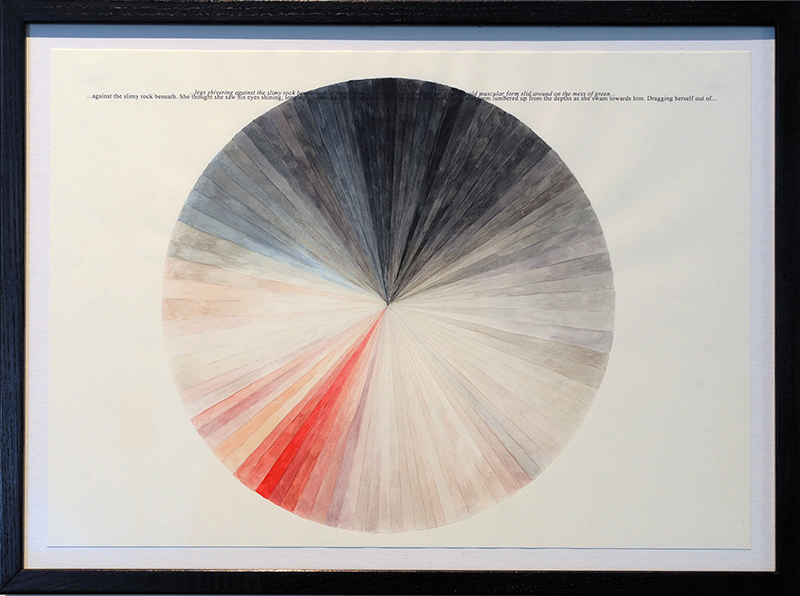
Installation view MUSCLE THEORY: Catherine Street, Reid Gallery, The Glasgow School of Art, 18 – 30 April 2015. Photo Alan Dimmick.
Catherine Street has shown her work widely both in performance festivals and exhibition venues. For more information on her work please visit catherinestreet.net.
For more about Catherine Street’s exhibition on Central Station, visit here.
//////
Looking for more articles? Visit here.


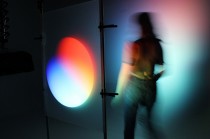
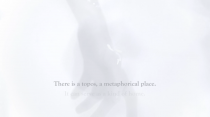
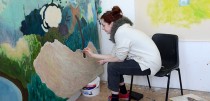









Comments